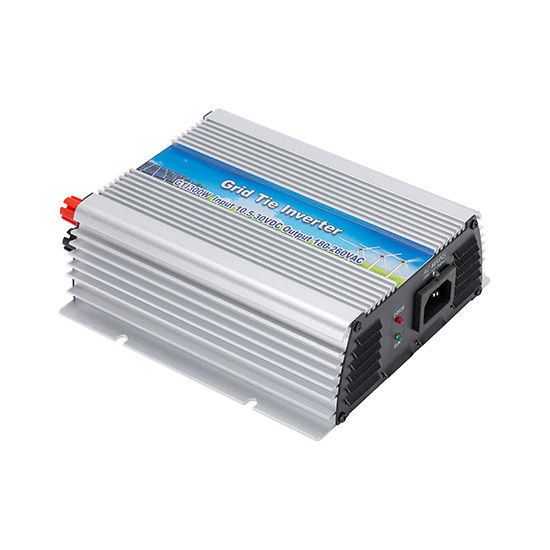The solar AC power generation system is composed of solar panels, charge controllers, inverters and batteries; the solar DC power generation system does not include inverters. The process of converting AC power into DC power is called rectification, the circuit that completes the rectification function is called a rectifier circuit, and the device that realizes the rectification process is called a rectifier device or rectifier. Correspondingly, the process of converting DC power into AC power is called inverter, the circuit that completes the inverter function is called inverter circuit, and the device that realizes the inverter process is called inverter equipment or inverter.

Inverter function
The solar inverter is a power conversion device whose main function is to invert the DC power of the battery into AC power. Through the full-bridge circuit, the SPWM processor is generally used to modulate, filter, boost, etc., to obtain the load frequency, rated voltage, etc. The matched sine wave AC power is supplied to the end user of the system.
Classified by application scope:
- Ordinary inverter
DC 12V or 24V input, AC 220V, 50Hz output, power from 75W to 5000W. - Inverter/ charging machine
In this type of inverter, the user can use various forms of power supply to power the AC load: when there is AC power, the AC power is used by the inverter to power the load, or to charge the battery. When there is no AC power, use the battery to supply power to the AC load. It can be used in combination with various power sources such as batteries, generators, solar panels and wind turbines. - Special inverter for post and telecommunications
Provide high-quality 48V inverters for post and telecommunications and communications. Its products are of good quality, high reliability, modular (module is 1KW) inverter, and has N+1 redundancy function, expandable (power from 2KW to 20KW). - Special inverter for aviation and military
This type of inverter has a 28Vdc input and can provide the following AC outputs: 26Vac, 115Vac, 230Vac, its output frequency can be: 50Hz, 60Hz and 400Hz, the output power ranges from 30VA to 3500VA, and there are DC- DC converters and frequency converters.
Classified by output waveform:
- Square wave inverter
The AC voltage waveform output by the square wave inverter is a square wave. The inverter circuits used by this type of inverter are not exactly the same, but the common feature is that the circuit is relatively simple, the number of power switch tubes used is small, and the design power Generally between one hundred watts to kilowatts. The advantages of square wave inverter are simple circuit, low price and easy maintenance. The disadvantage is that because the square wave voltage contains a large number of high-order harmonics, additional losses will be generated in the load electrical appliances with iron core inductance or transformer, which will interfere with the radio and some communication equipment. In addition, this type of inverter also has shortcomings such as insufficient voltage regulation range, insufficient protection function, and relatively large noise. - Step wave inverter
The AC voltage waveform output by this type of inverter is a staircase wave, and there are many different circuits for the inverter to realize the staircase wave output, and the number of steps in the output waveform varies greatly. The advantage of the ladder wave inverter is that the output waveform is significantly improved compared to the square wave, and the high-order harmonic content is reduced. When the ladder reaches more than 17, the output waveform can achieve a quasi-sine wave. When the transformerless output is used, the overall efficiency is very high. The disadvantage is that there are many power switch tubes used in the step wave superposition line, and some of the line forms also require multiple sets of DC power input, which brings trouble to the grouping and wiring of the solar cell array and the balanced charging of the battery. In addition, the step wave voltage still has some high frequency interference to radios and some communication equipment. - Sine wave inverter
The AC voltage waveform output by the sine wave inverter is a sine wave. The advantages of the sine wave inverter are that the output waveform is good, the distortion is very low, the interference to the radio and communication equipment is small, and the noise is low. In addition, the sine wave inverter has complete protection functions and high efficiency of the whole machine. The disadvantage is that the line is relatively complex, the maintenance technology is required to be high, and the price is relatively expensive.
